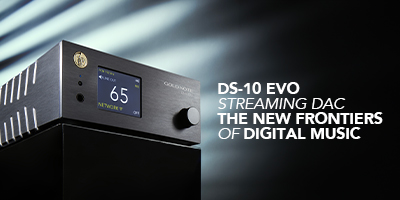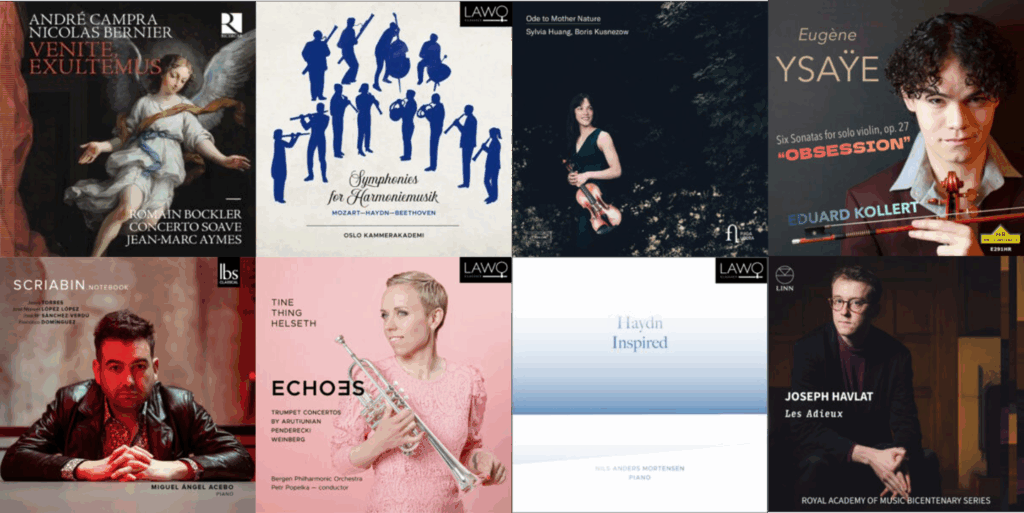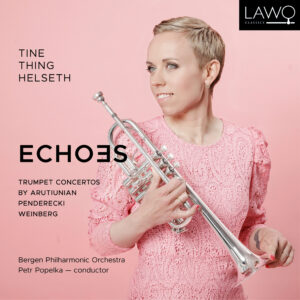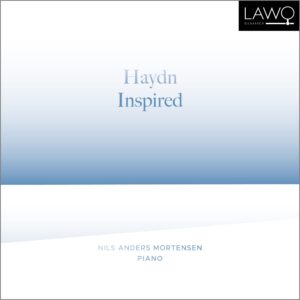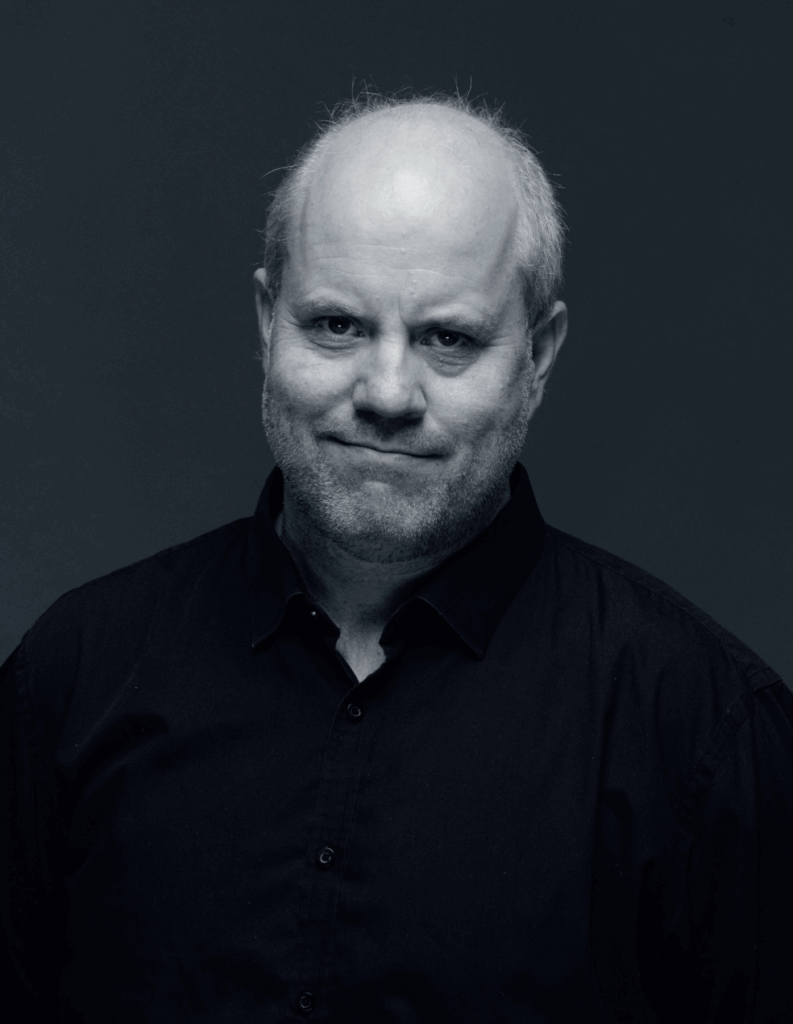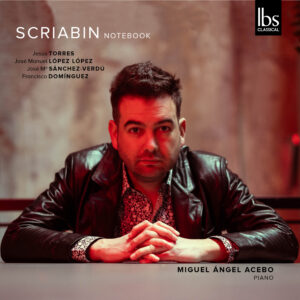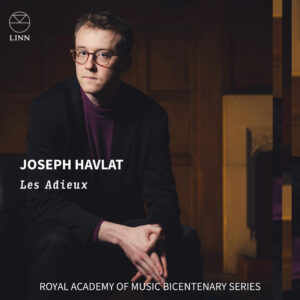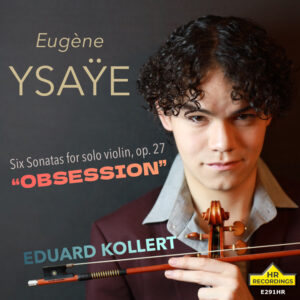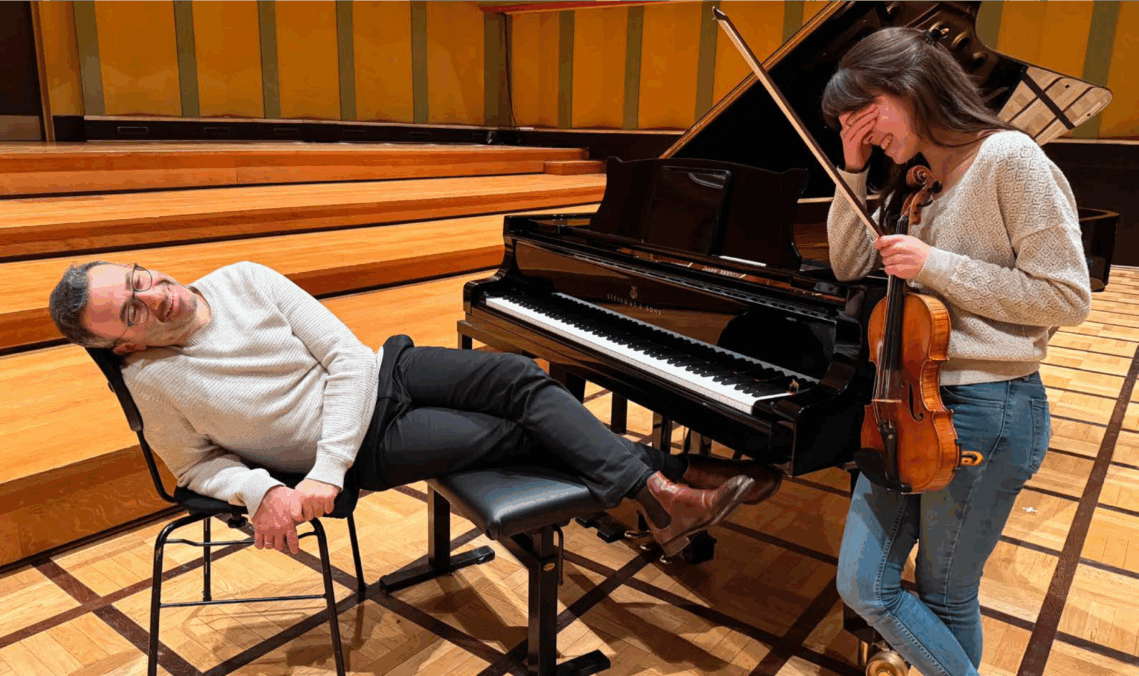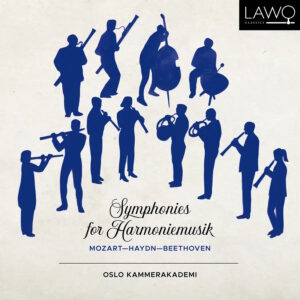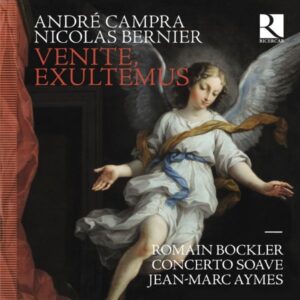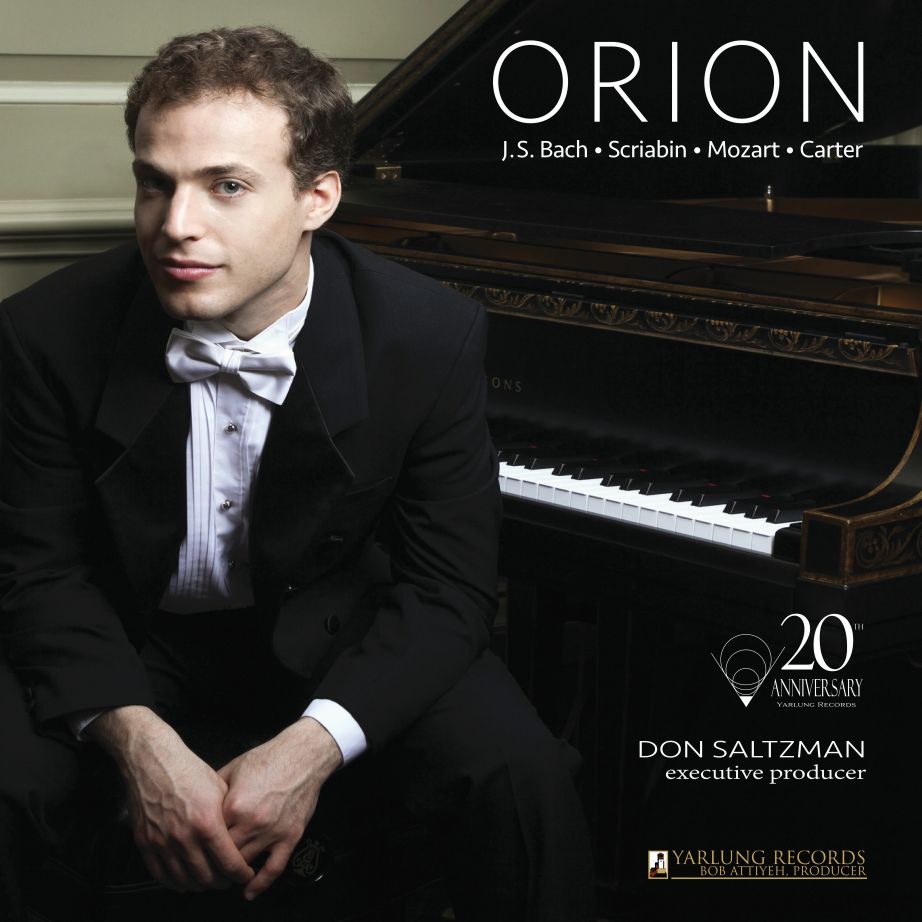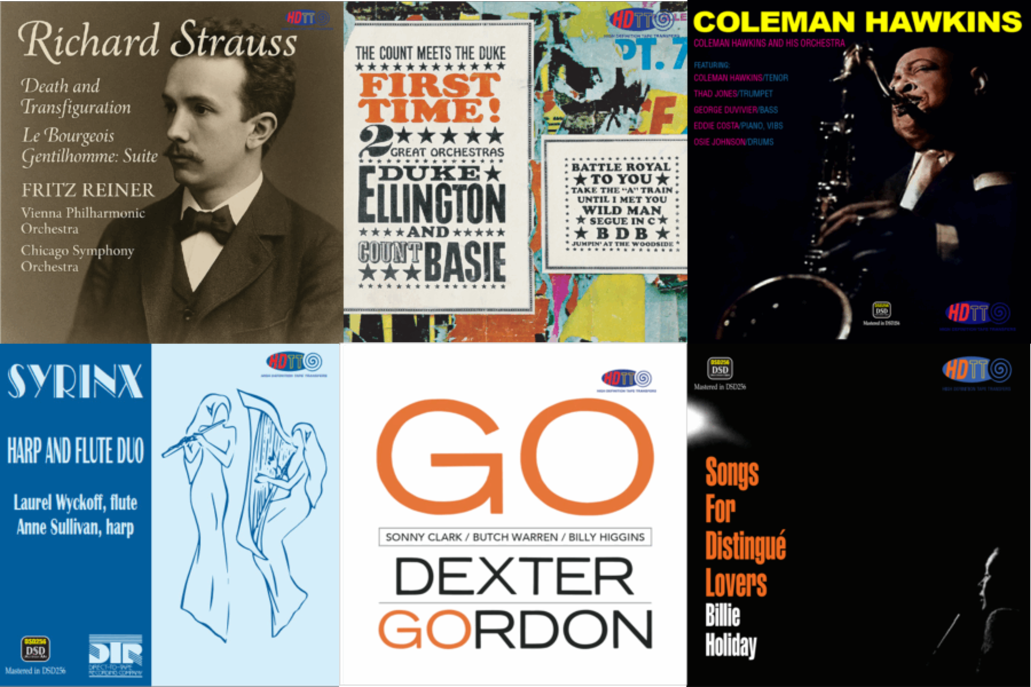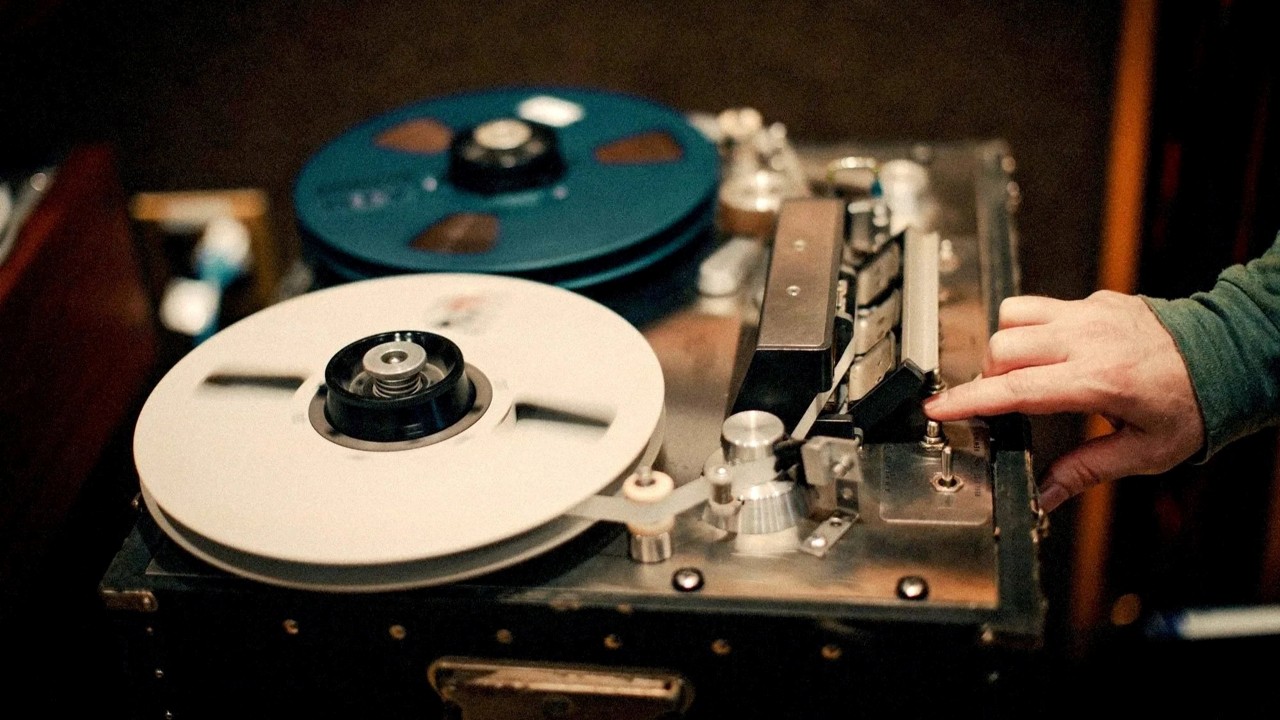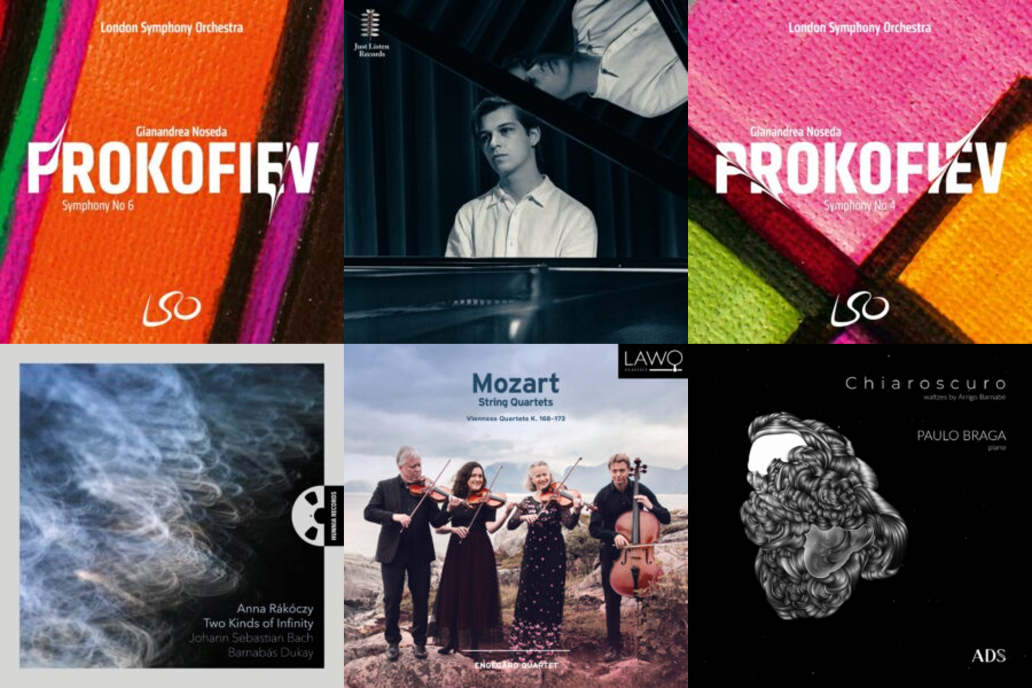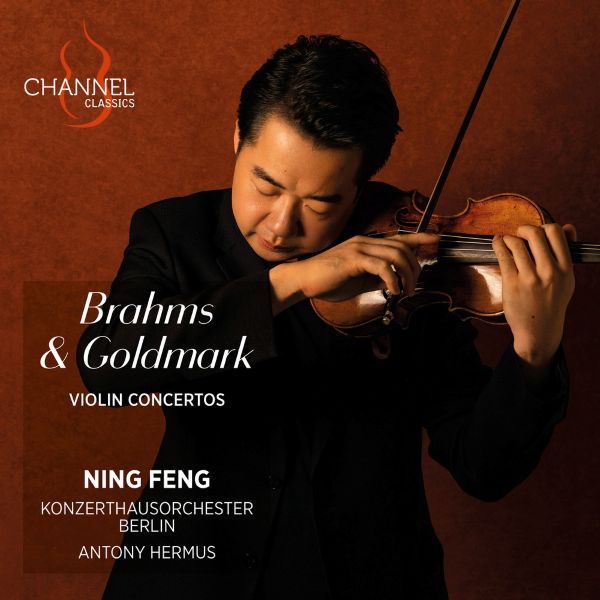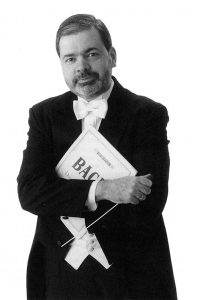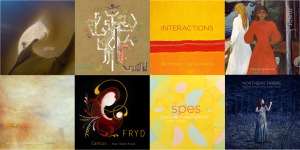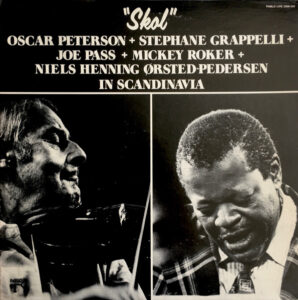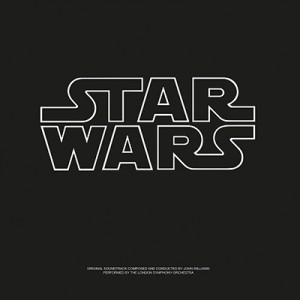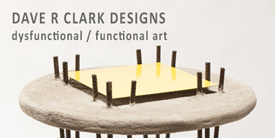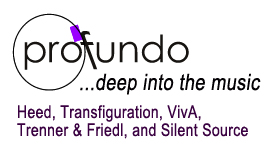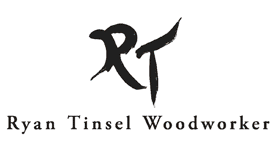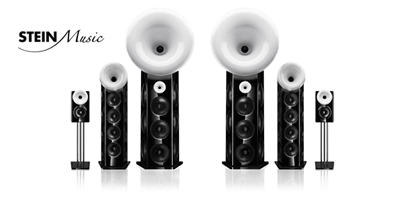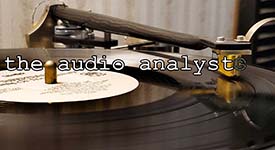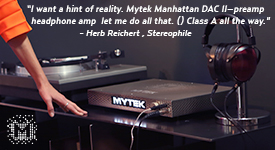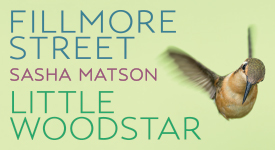Once again we have a full measure of excellent recordings released in recent weeks. If I didn't like them, I would not write about them. And I do like these very much. They start off with an outstanding new recording of trumpet concertos from the inestimable Tine Thing Helseth and Lawo Classics, then some very nice recordings for solo piano, then solo violin, then violin/piano duo, and then ensemble of winds, and finally a period instrument ensemble with solo voice (which I'm reliably informed are motets). In any event, I hope you will find something here to enjoy.
Echoes: Trumpet Concertos by Arutiunian, Penderecki, and Weinberg, Tine Thing Helseth, Bergen Philharmonic Orchestra, Petr Popelka. Lawo Classics 2025 (DXD 32-bit, Stereo, MCh) Edit master Sourced HERE
It is always a special day around here when Norwegian trumpeter Tine Thing Helseth (b. 1987) releases a new recording. And this is another excellent performance and recording: three trumpet concertos by 20th Century composers Alexander Arutiunian (1920-2012), Krzysztof Penderecki (1930-2020), and Mieczysław Weinberg (1919-1996).
Helseth gives us two Arutiunian works, a nearly seventeen minute single-movement Trumpet Concerto, which opens the album (a classic work for trumpet and fiendishly difficult), and a similar length Theme and Variations presented later in the album. The liner notes give us this description: "Arutiunian's intense and resourceful music combines elements of Russian romanticism and modernism with the composer's own brand of scented melodiousness... Arutiunian understood the trumpet's lyrical qualities, he was also fascinated by its capacity for dynamic articulation. The score demands frequent rapid tonging from the soloist as well as long-breathed tunes." The concerto, on which he began working in 1953 but only completed in 1950, was embraced by trumpeters following its first recording and has become a staple of the trumpet repertoire.
Born in the Armenian capital Yerevan, just before the country was subsumed into the Soviet Union, Arutiunian studied at the conservatories of Yerevan and Moscow before becoming one of his homeland's most pivotal musical figures, leading the Armenian Philharmonic Society for decades.
Penderecki's Concertino per tromba e orchestra is presented next. Penderecki seems not to have given trumpet much attention over his career. After 20 concert works for other solo instruments, Concertino in 2015 was his first trumpet concerto. And, while only a bit over 11 minutes long, it is stunningly good and is rapidly becoming a significant piece in the trumpet repertoire. The general mood of this work is positive, colorful, technically demanding for the soloist, and yet with emotional/lyrical content that includes some downright perky sections. It is an impressive piece that is challenging but far from inaccessible. Overall, it is quite a contrast to Penderecki's more somber and challenging compositions of the 60s and 70s, and Helseth performs brilliantly.
Mieczysław Weinberg was born into persecution. He escaped from Warsaw in 1939 just before Hitler's forces murdered his immediate family. He managed to settle in Moscow but was there subjected to the anti-Semitism of Stalin's final years. He had survived the Nazis, Stalin and even the Soviet Union by the time of his death in 1996. But he didn't lived long enough to witness the significant surge of appreciation for his music that we've seen in the 21st Century. I have greatly enjoyed seeing recorded performances of his chamber works appearing with more frequency over the past 15 years, and it's with great pleasure that I'm hearing this composition for trumpet and orchestra.
Written in 1966–1967, Weinberg's Concerto for Trumpet and Orchestra Op. 94 spans a range of moods from the the playful and sardonic opening movement (evoking strains of his mentor Dmitri Shostakovich), a much darker and introverted second, and a brilliant, witty "Fanfares" famous for its musical allusions and quotations of other composers (from Shostakovich, to Haydn, to Johann Strauss II). It is in the Fanfares movement that Weinberg takes Soviet public music's brass flourishes and triumphal rhythms and skillfully twists with dissonance and sarcasm, undercutting their triumphalism just as so often accomplished by his mentor.
Technically challenging, expressive, and structurally inventive, it is a rewarding work to hear as Helseth and orchestra give us a fully engaged and very appealing performance.
Throughout the album, Helseth's trademark capacity to to transform the brassy trumpet sound into something soft, supple, lyrical, and delectable is constantly displayed. Hers is a talent rarely matched by other performers.
The sound quality from Lawo's Thomas Wolden is once again a thing of excellence and great aural beauty. The balance of soloist and orchestra is perfectly judged, and the overall listening experience makes me forget it is a recording as I simple melt into the music.
Haydn Inspired, Nils Anders Mortensen (piano). Lawo Classics 2025 (DXD 32-bit, Stereo, MCh) Edit Master Sourced HERE
This recording by Norwegian pianist Nils Anders Mortensen (b. 1971) is an illustration of just how well performances of Haydn's music on modern piano can sound in the hands of a sympathetic musician. And particularly so when that musician has the technical skills and musical sensibilities of Mortensen.
Haydn's keyboard sonatas, more than sixty in total, span almost his entire career. However, in the 1780's the genre became much less of a preoccupation for him while he concentrated more on string quartets and piano trios. Mortensen convincingly demonstrates why we should pay more attention to these enchanting works.
While we find good representation on recordings and in live performance of Haydn's string quartets, his
keyboard sonatas have been generally undervalued by recording labels. Fortunately for listeners, more and more pianists are championing these works than used to be the case forty years ago when English composer John McCabe wrote of "the shameful neglect of Haydn's sonatas. There can hardly be another such corpus of outstanding and fascinating works by one of the great masters so wilfully ignored by performers ..."
Here we have a resounding vindication of the value of Haydn's keyboard music. You should listen. You will be rewarded by the experience. Mortensen is terrific! Haydn's music is wonderful.
Recorded in Sofienberg Church, Oslo, in December 2021, the sound quality is just wonderful, as we've come to expect from Lawo Classics recording and mastering engineer Thomas Wolden. His recordings are so reliably excellent that it is almost "a given" that the next release you hear will delight you. And the remarkable thing is that he accomplishes this outcome across virtually all genre of classical music. Hearing his results is humbling. It is also tremendously rewarding!
Nils Anders Mortensen
Scriabin Notebook, Miguel Ángel Acebo (piano). IBS Classical 2025 (192k, DXD, Stereo) HERE
Pianist Miguel Ángel Acebo presents an album filled by an elegant riot of colors, moods, and metaphors. Informed by the overarching influence of the Russian master Alexander Scriabin (1872-1915), the album presents six works of Scriabin interspersed with modern works by José Manuel López López (1956), Jesús Torres (b. 1965), José María Sánchez-Verdú (1968), and Francisco Domínguez (1993). The connections among these modern composers and the earlier master soon reveal themselves to be deeply rooted in their conceptual, aesthetic, and technical kinship.
The album opens with the introspective Laberinto de silencios (2012) of Jesús Torres, a work sculpted through rhythm and silences. This is then followed by his Semejante a la noche (2013), a more active, darker, and ornamented piece that opens with movement across the piano's extreme registers in a harmonic
kaleidoscope of continuously undulating and shifting rhythms.
From this opening, Scriabin's Poeme-Nocturne Op.61 (1911-1912) provides a reference point before Acebo dives into José Manuel López López's Lo fijo y lo volátil (1994), a work of incisive, striated rhythms that continually unfold. This work incorporates electronics for pre-recorded piano sounds, allowing manipulation and expansion of both the instrument's sonority and the performer's physical capacities.
And from here we return to Scriabin with his 2 Poemes Op.63 (1912).
The album continues with demanding, exploratory, challenging works by Sánchez-Verdú and Domínguez together with additional works by Scriabin (his Vers la flamme Op.72 and 2 Danses Op. 73).
The entirety traces an aesthetic and spiritual journey that connects Scriabin's mysticism with the sensitivity of four generations of Spanish composers.
Acebo writes, "It is no coincidence that resonance serves as the guiding thread throughout the entire album. It appears in the spectral language of López López, in the astonishing textures of Sánchez-Verdú, and in the work of Francisco Domínguez, who undertook a daring study of the instrument's sympathetic vibrations. In Laberinto de silencios, resonance unfolds within a contemplative environment where silence is equally, if not more, significant. The labyrinth implies shadow, secrecy, and passage. Silence, when shared, constitutes the most intense form of community, where lips need not part. Here we are gathered, united in purpose."
The overall impact is of immense conceptual challenges and mind-blowing technical demands. And pianist Miguel Ángel Acebo performs this challenge with precision and technical brilliance. May I say that I simply stand in awe of this performance and of the conception for this recital. It has been an emotional experience that I found most rewarding.
Recorded at the Auditorio Manuel de Falla (Granada) 2-4 September 2024, the sound quality is excellent. The piano is closely microphoned to capture fully the dramatic and intense dynamic changes and leading edge transients. But nothing sounds in the least hyper-detailed in any negative way—all sounds very natural and timbrally accurate with a good sense of overall air.
Highly recommended.
Les Adieux (The Farewell), Joseph Havlat (piano). Linn Records 2025 (192k, Stereo) Edit Master Sourced HERE
Kurtág, Janáček, Martinů, Prokofiev—oh, my. All such short little works, but all so very nice. And all are very nicely played. The works play off of each other with delightful contrasts in style across the composers. The album concludes with a short, very delicate, composition by pianist Joseph Havlat that tops off the recital like the proverbial "cherry on top."
The core of this album is folk music, melodic from Janáček and rhythmic from Martinů, whose works contrast distinctively to one another. Leading off the album is a work short work by György Kurtág (b. 1926) in the style of Janacek title "Les Adieux," and concluding the album is a work by Havlat himself, similarly titled "Les Adieux," thus making both prologue and epilogue. Havlet describes the album as being arranged in the form of a recital, intending to be heard as if in a live performance from beginning to end. And this is how I enjoyed hearing it.
Pianist Joseph Havlat from Hobart, Australia, and now residing in London is a former student of the Royal Academy of Music, receiving highest possible recital mark for a postgraduate pianist and now performing in major concert venues around the UK, Europe, America, Japan and Australia.
Obsession: Ysaye Six Sonatas for Solo Violin, Op. 27, Eduard Kollert. HR Recordings 2025 (DXD 32-bit, Stereo) Edit Master Sourced HERE
If you one is to make a debut album, and if one is a violinist, what better way to make an entrance than by playing the incredibly challenging Sonatas for Solo Violin by Eugène Ysaÿe (1858–1931).
Ysaÿe was a virtuoso violinist and composer and was regarded in his lifetime as "The King of the Violin." Composed in 1923, these six sonatas are a virtuosic and challenging set of works, similar in difficulty to Bach's sonatas and Paganini's caprices. No violinist would undertake them without exceptional skill, preparation, and supreme confidence.
In this debut recording, the young multi-award winning violinist Eduard Kollert delivers with excellence. For over 60-minutes, the music of Ysaÿe resounds joyfully, challengingly, resolutely, with technical brilliance, but also with great emotion and shifts in communicative content. The performance is a tour de force. And, as with so many releases from HR Recordings, the sound quality is excellent. I let the recital flow over and around my ears with immense enjoyment.
Eduard Kollert is a performer whose continuing career will be incredible to observe.
Most highly recommended.
Ode to Mother Nature, Sylvia Huang (violin), Boris Kusnezow (piano). Fuga Libera 2025 (192k, Stereo) Edit Master Sourced HERE
Sylvia Huang (violin) and Boris Kusnezow (piano) treat us to a musical journey, which celebrates the cycle of the seasons with works by Gabriel Dupont, Lili Boulanger, Dora Pejačević, Edvard Grieg, Einojuhani Rautavaara, Camille Pépin and Eugène Ysaÿe. Each piece highlights an aspect of one of the seasons. Each is lovingly, beautifully, performed. The entire album is presented with delightful intimacy. It is a dialog between these performers which we're invited to share.
I found the variety of music and composers well chosen—with the programming maintaining my interest as the recital moved from piece to piece. That, to me, is a mark of good selections. While I enjoyed the various works from all the composers and loved the diversity of sound and style, it was the composition, Autumn Rhythm (2019), by Camille Pépin (b. 1990 in Amiens) that really jumped out for me. "Rhythm" is an apt portion of the name, as this work simply sparkled, danced, dipped, dived, and drove along on both piano and violin, sometimes in tandem, sometimes in dialog, sometimes in separate spaces, but always coming back together with vigor. If you're just auditioning, listen to this one track for a sense of the energy these two performers bring in their collaboration on this album.
Then listen to the concluding work by Gabriel Dupont, Journele de printemps: No. 2 au soir, to hear just how lovingly well played other works on the album sound. It is delightful.
Enjoyably recommended.
Symphonies for Harmoniemusik: Mozart, Haydn & Beethoven, David Friedemann Strunck, Oslo Kammerakademi. Lawo Classics 2025 (DXD 32-bit, Stereo) Edit Master Sourced HERE
Oslo Kammerakademi performs chamber music for winds based on the historical Harmoniemusik instrumentation. Harmoniemusik is a German term for a classical-era wind ensemble, popular in the late 18th century. It typically consisted of pairs of instruments like oboes, clarinets, bassoons, and horns and was often used for social entertainment, such as outdoor serenades and dinner music, for wealthy patrons. Here the ensemble additionally includes double bass and tympani.
The album leads with a transcription of Mozart's "Paris" Symphony (No. 31, K297, composed in 1778), the first symphony in which Mozart used clarinets. The transcription for wind ensemble was made by Carl Andreas Goepfert (1768–1818), a clarinetist employed at the court of Meiningen, where he was also in charge of the military music. Goepfert studied music with Mozart in Vienna in the late 1780s, and admired during his lifetime for his own original compositions. But it his skilled arrangements of works for Harmoniemusik also brought him attention, and he seems to have been employed by the Bonn publishing house Simrock, for whom he transcribed Mozart's Gran Partita for wind octet.
Where Mozart's Paris Symphony is a fairly straightforward composition, with simple doubling the tutti passages, Haydn's treatment of the winds in his "Oxford" Symphony (No. 92 composed in 1789) is just the opposite. The Oxford Symphony anticipates his advanced wind writing in his final twelve symphonies, with the woodwind quintet of flute, oboes and bassoons, the string section, and the brass/timpani group each have distinct functions. Transcriber Josef Triebensee (1772–1846) set himself quite a task when he decided to transcribe Haydn's masterpiece for wind octet with trumpet.
And finally we come to Beethoven's Symphony No. 1 (1801), clearly indebted to his teacher Joseph Haydn but just as clearly striking off into new territory. This by Georg Schmitt was never published. As in Goepfert's Mozart transcription, Beethoven's original score is entirely recognizable in Schmitt's transcription. Though Beethoven notoriously disliked the thought of his music being transcribed for different forces, the spirit and humor of his original score shines through in this version for Harmoniemusik.
Founded in 2009 by artistic director David Friedemann Strunck, Oslo Kammerakademi has established itself as a leader in Europe, with critically acclaimed recordings. The ensemble utilizes historical brass instruments in repertoire from the Baroque, Classical and Romantic periods contributing to the ensemble's authentic sound and historically oriented performances.
Oslo Kammerakademi in recording session in Bragernes Church, Dramman, 30 September, 01 - 02 October, 2024
Venite Exultemus: Motets by Campra and Bernier. Concerto Soave, Jean-Marc Aymes, Romain Bockler. Ricercar 2025 (192k, Stereo) Edit Master Sourced HERE
Beat me with a wet noodle, but I really enjoy music of the Baroque on period instruments. And when it is so nicely performed as this recording by Concerto Soave, the experience is just most pleasant. If you have any interest in early music, then the Ricercar label is a resource you should come to know. Founded in 1980, their releases are consistently excellent for both performance quality and recording quality.
With this album we receive some lovely performances of motets by André Campra (1660-1744) and Nicolas Bernier (1664-1734) with brief interludes for organ by others. The motets are sung very expressively by baritone Romain Bockler, accompanied by some accomplished members of Concerto Soave on violin, bass viol, theorbo, and harpsichord/positive organ (also playing the great organ in the interludes). The motets are varied and have continuing interest throughout.
Campra and Bernier were two leading musicians of their period, both of whom held positions as masters of music. Campra was born in Aix-en-Provence and began his career in his native region, where he was successively music master at cathedral in Toulon, Arles, and Toulouse, before taking up the same post at the cathedral of Notre-Dame in Paris in 1694. Bernier, born in Mantes-la-Jolie, held the same position at Chartres cathedral, Saint-Germain-l'Auxerrois, and the Sainte-Chapelle in Paris.
Recorded at église Notre-Dame de Beaulieu, October 2024, the sound quality is quite nice, with nice balance of direct and reflected sound from this spacious natural acoustic setting. Text with English translation is provided in the digital booklet.
Keyboardist Jean-Marc Aymes and baritone Romain Bockler in recording session.
All images courtesy of the respective labels.

